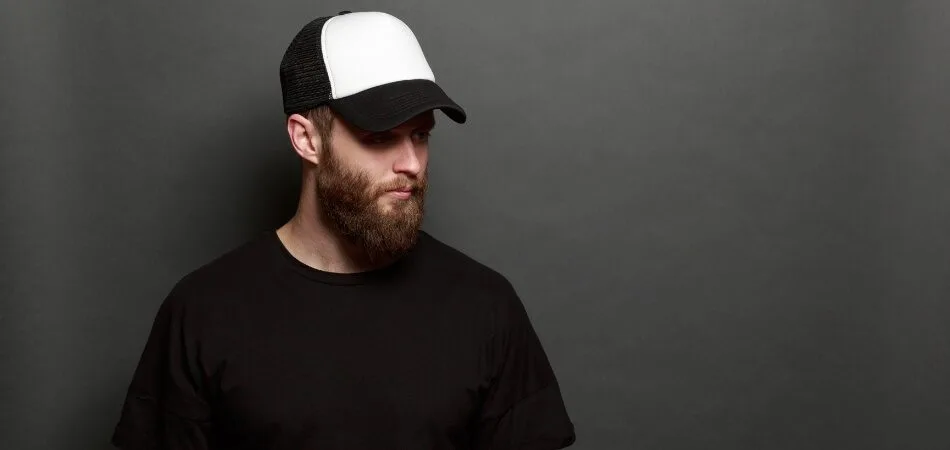Academic conferences are active hubs of knowledge exchange and scholarly discussions. They bring together academics, researchers, and experts from various fields to share their insights and discoveries. As you prepare to attend one of these intellectual gatherings, you might be thinking: Is it bad to wear a baseball cap to an academic conference?
Yes, wearing a baseball cap to an academic conference is generally considered inappropriate. It’s too casual and doesn’t meet the professional attire standards expected at such events. Opt for business casual or professional clothing instead.
In this blog, we’ll explore deeper into the reasons behind this convention and provide tips on dressing appropriately for academic conferences. Join us as we explore the nuances of academic conference attire and how it can impact your experience.
What Happens at an Academic Conference?
At an academic conference, scholars and experts gather to exchange ideas, research findings, and insights. These events encourage intellectual discussions and foster collaboration among attendees. Typically, a conference spans several days and comprises various activities.
During the international academic conference, attendees engage in paper presentations, where researchers from all around the world share their latest works. These presentations offer a chance for scholars to receive feedback, ask questions, and gain new perspectives on their research.
Workshops and panel discussions are also common. These sessions delve into specific topics or themes, allowing participants to explore subjects in depth and learn from experienced speakers. It’s a fantastic opportunity for networking and expanding one’s knowledge.
Additionally, poster sessions showcase research visually, making complex concepts more accessible. Attendees can stroll through these exhibits, interact with the researchers, and discuss their findings. Overall, academic conferences are dynamic gatherings that foster intellectual growth, collaboration, and the sharing of knowledge.
Significance of Dress Codes in Academic Conferences
In academic conferences, dress codes play a crucial role in maintaining professionalism and creating the right environment for scholarly exchange.
- Professionalism: Dress codes set a standard of professionalism, ensuring attendees are taken seriously and project a positive image of academia.
- Respect: They show respect for the event and fellow attendees, emphasizing the significance of the knowledge-sharing environment.
- Comfort: Appropriate attire ensures comfort, allowing participants to focus on discussions and networking without distractions.
- Equality: Dress codes promote equality by eliminating attire-related biases and judgments, creating an inclusive atmosphere.
- Cultural Sensitivity: They consider diverse cultural norms, respecting attendees from various backgrounds.
- Focus: Proper attire helps attendees concentrate on intellectual discussions rather than clothing choices.
Dress codes at academic conferences serve as a cornerstone of professionalism, respect, and inclusivity, fostering an environment conducive to meaningful scholarly interactions.
Is it Bad to Wear a Baseball Cap to an Academic Conference?
Yes, wearing a baseball cap to an academic conference is generally considered inappropriate. It doesn’t align with the professional atmosphere these events uphold. In the field of academia, where intellectual exchange is paramount, attire plays a significant role. Here’s an in-depth look at the factors involved:
Professionalism
Academic conferences demand a high level of professionalism to foster intellectual discussions and networking. A baseball cap can convey a casual image, which may not be suitable for the serious and academic tone of such events. Dressing professionally, on the other hand, sends a clear message of your commitment to the field.
First Impressions
Attire plays a crucial role in forming first impressions. Opting for formal clothing not only helps create a positive image among peers and potential collaborators but also reflects your dedication to the academic community. It communicates that you take your role as a scholar seriously.
Respect for the Event
Wearing appropriate attire shows respect for the conference, its organizers, and fellow attendees. It acknowledges the significance of the knowledge-sharing environment and shows that you value the opportunity to engage with your academic peers.
Focus on Content
Dressing professionally allows participants to focus on the conference’s content and discussions rather than being distracted by attire choices. It ensures that the conversations revolve around the academic topics at hand, enhancing the overall experience for everyone involved.
Networking Opportunities
Academic conferences provide valuable networking opportunities. Dressing appropriately increases your chances of making meaningful connections with colleagues and experts in your field. It conveys your readiness to engage in scholarly discussions and collaboration, making you more approachable to potential contacts.
Cultural Sensitivity
Consideration of cultural norms is essential. Dress codes at conferences respect the diverse backgrounds and expectations of attendees. Being mindful of cultural differences in attire choices not only demonstrates cultural sensitivity but also promotes inclusivity and mutual understanding among participants.
Essential Steps to Dressing Properly for Academic Conference
Preparing for an academic conference involves more than just packing your research materials. Your choice of attire can greatly impact your experience and interactions at the event. Here’s a step-by-step guide to dressing properly for an academic conference
Step 1: Research the Dress Code
Begin by thoroughly researching the dress code for the conference. Examine the event’s official website, guidelines, or emails from organizers to gain insights into the expected attire. Some conferences may specify formal, business casual, or even thematic dress codes. Understanding these guidelines is crucial for making appropriate clothing choices.
Step 2: Opt for Business Casual
When in doubt about the dress code, lean towards business casual attire. For men, this typically includes slacks, a collared shirt, and dress shoes. Women can opt for slacks, skirts, blouses, or dresses with closed-toe shoes. Avoid jeans, t-shirts, or overly casual clothing, as these may not convey the desired level of professionalism.
Step 3: Consider the Venue
Take into account the climate and venue of the conference. If it’s in a warm, tropical location, lightweight and breathable fabrics like cotton or linen are suitable. Conversely, for conferences in colder climates, layering with sweaters or blazers is a practical choice to adapt to varying indoor and outdoor temperatures.
Step 4: Dress Comfortably
Comfort is paramount for long conference days, especially when it comes to dress wear at academic conferences. Ensure that your chosen clothing fits well and doesn’t cause discomfort, distractions, or constant adjustments. Invest in comfortable, supportive shoes suitable for walking and standing, as you may be on your feet for extended periods during networking sessions or poster presentations.
Step 5: Accessorize Thoughtfully
Keep accessories simple and tasteful. Minimalistic jewelry, a wristwatch, and a professional-looking bag or briefcase can enhance your overall appearance without being distracting. Avoid wearing excessive or flashy jewelry, as it can divert attention away from your research and discussions.
Step 6: Grooming Matters
Pay meticulous attention to personal grooming. Maintain clean and neat hair, nails, and hygiene. Iron your clothing to eliminate wrinkles, and ensure that your attire is free of stains or visible wear and tear. A well-groomed appearance complements your chosen attire and reinforces a professional image.
Step 7: Pack Essentials
Prepare a small emergency kit containing essentials like a lint roller, stain remover pen, extra clothing, and comfortable insoles for your shoes. This kit can be a lifesaver in case of unexpected mishaps, ensuring you always look your best and feel confident throughout the conference.
Common Mistakes to Avoid While Wearing Appropriate Attire
Avoiding common clothing mistakes is crucial when striving to wear appropriate attire for academic conferences. Here are some key points to keep in mind:
- Overly Casual Choices: One common mistake is opting for overly casual attire, such as jeans and t-shirts, which can undermine the professional atmosphere of academic conferences.
- Inadequate Preparation: Failing to plan and prepare your outfit in advance can lead to last-minute choices that may not align with the event’s dress code or your comfort.
- Disregarding Comfort: Prioritizing style over comfort can be a misstep. Uncomfortable clothing or shoes can distract you and affect your confidence during the conference.
- Ignoring Cultural Sensitivity: Neglecting to consider the cultural norms and expectations of diverse attendees can lead to inadvertent insensitivity or discomfort for others.
- Excessive Accessories: Overloading on flashy or excessive accessories can draw attention away from your research and discussions, potentially leaving the wrong impression.
- Poor Grooming: Neglecting personal grooming, such as wrinkled clothing or unkempt appearance, can detract from the professionalism and respect expected at academic conferences.
Avoiding these common clothing mistakes ensures that your attire enhances your experience and contributes positively to the academic conference environment.
Tips for Making the Most of an Academic Conference
Participating in an academic conference is more than just attending sessions and listening to presentations. It’s an opportunity to immerse yourself in a dynamic knowledge-sharing environment, connect with like-minded individuals, and contribute to your field. To ensure you make the most of this enriching experience, consider the following tips:
Plan Your Schedule Strategically
When reviewing the conference agenda, consider both your current research interests and long-term career goals. Attend sessions that align with your objectives, but also explore topics outside your immediate area to broaden your knowledge. Create a schedule that allows for breaks to recharge.
Engage Actively in Discussions
Actively participating in discussions doesn’t mean just asking questions. Share your insights, experiences, and research findings. Be open to diverse perspectives and engage in constructive debates. Follow up with speakers and fellow attendees after sessions to continue conversations.
Network with Intent
Approach networking with a clear goal in mind. Identify individuals who can offer mentorship, collaboration, or insights into your research. Prepare a concise introduction that highlights your interests and objectives. Follow up with new contacts after the conference to nurture relationships.
Take Notes and Reflect
Beyond note-taking, consider creating a reflection journal. Write down key takeaways from each session and how they relate to your research. This helps consolidate your learning and plan actionable steps when you return to your academic work.
Attend Social Events
Attend social events and receptions with a mindset of genuine connection-building. Approach conversations with curiosity and active listening. These events offer valuable opportunities for relaxed, informal discussions that can lead to collaborations or future friendships.
Share Your Research
If you have the opportunity to present your research, prepare a compelling presentation that communicates your findings effectively. Engage with the audience during the Q&A session and be open to feedback. If presenting a poster, create a visually appealing display that succinctly conveys your research.
By following these tips, you can maximize your experience at academic conferences, gain insights, establish meaningful connections, and contribute to the academic community.
Bottom Line
Dressing suitably for an academic conference is more than a matter of fashion; it’s about respect and professionalism. The right attire signifies seriousness and commitment to the scholarly environment.
In the context of whether is it bad to wear a baseball cap to an academic conference, it’s evident that such casual wear is inappropriate. This attire detracts from the professional and intellectual atmosphere that these gatherings aim to cultivate.
By choosing business-appropriate attire, attendees demonstrate their respect for the academic community and the event itself. It’s not just about looking good, but about contributing positively to the environment of knowledge exchange and collaboration.








